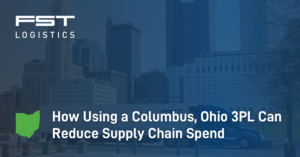When selecting a provider for temperature-controlled transportation solutions, it can be overwhelming to know where to even start. But for most, both safety and security come to top of mind.
The Food Safety and Modernization Act was passed, which established new parameters to ensure the safety of food within the U.S. supply chain, including the transport of food products. This also includes establishing safe temperatures and ensuring appropriate storage conditions when food products are under transport.
Typically when someone makes the decision to use temperature-controlled transportation, it is due to the need to keep a product within a particular temperature range. Most often, that temperature range is set to protect the product.
Depending on the product, the temperature ranges for transport will vary. As an example, you would not want to ship ice cream at 40 degrees or fresh meat at 60 degrees; you’ll end up with a literal mess. Therefore, the temperature range is set to meet the specific needs of the product.
What makes temperature-controlled transportation so unique is that the need of the service is almost entirely predicated on product safety. When choosing a provider for temperature-controlled transportation, you want to look for a provider that puts safety first.
Regardless of price, ease of business or anything else, your provider must put safety first. The consequences of shipping a product outside of its safety ranges compromises health and/or product effectiveness (such as pharmaceuticals, for example).
If your potential provider is not focused on product safety, it is time to move on to the next provider that emphasizes the safety and well-being of your shipped product.
###


